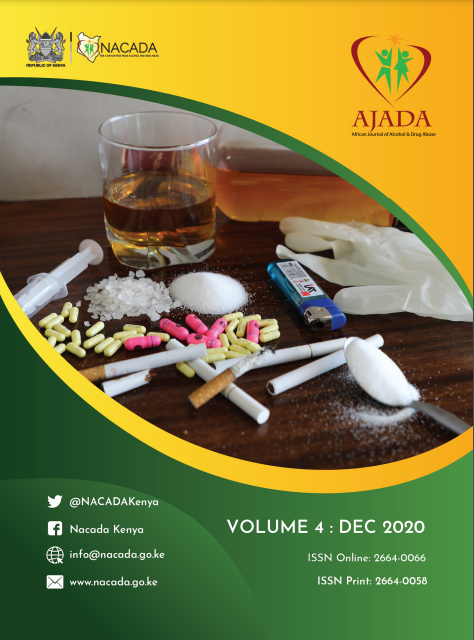Public Health in Urban Spaces; Vulnerability of Youth to Drug Abuse in Nairobi’s Mukuru Kwa Njenga Informal Settlements, Kenya
Keywords:
Drug abuse, slums, vulnerability, vested interest theory, youthAbstract
Rising urban population, deprivation, Poverty, shifting family practices and lack of opportunities for young people are widely recognized as key factors influencing the increasing indulgence of young people in crime and drug abuse (UN Habitat, 2007). The study sought to assess the vulnerability of youth in slums to drugs; specifically, Mukuru Kwa Njenga in Nairobi. The study is based on Vested Interest Theory (VIT). The interests of the individual postulate that an attitude toward objects allows for a number of responses and courses of action, in order to balance motivation and decision to behave in an efficient fashion. This research is a cross-sectional descriptive design to assess the vulnerability of youth in slums to drugs and more specifically Mukuru Kwa Njenga in Nairobi The study population was the youth both in and out of school in Mukuru kwa Njenga informal settlements. For this study purposive sampling, snowballing and simple random sampling approach were adopted. The sample size was 210 respondents derived following Krejcie and Morgan formula (1970) from a target population of 460. Thirty key informants from the study area were recruited. Interviews were used to collect data from key informants and questionnaires from youth and their leaders. Qualitatively, data was given in form of text whereas quantitatively, descriptive statistics including standard deviation and frequency distribution were used to describe given samples. ANOVA and Chi square were used to analyze data quantitatively. Cannabis (Bhang) is the most abused substance with 50% of the youth in the slums smoking it.
Downloads
Published
Issue
Section
License
Copyright (c) 2020 Christopher Mutai, Nicholas Ombachi, Ruth Simiyu

This work is licensed under a Creative Commons Attribution-NonCommercial-ShareAlike 4.0 International License.


